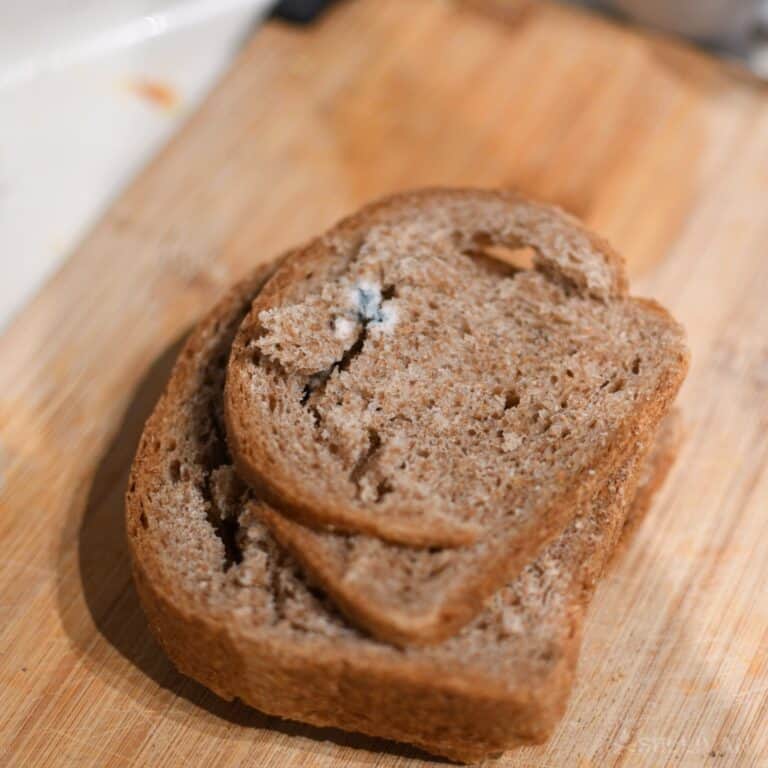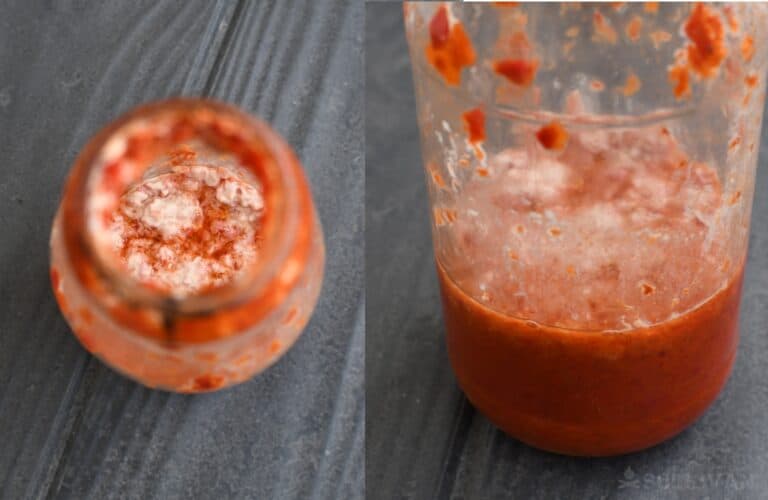There are many methods and theories on how long to keep and use food, or when it has gone bad. There are some signs that are visible, and many that are not.
Scientists say that not all bacteria are harmful, and there is a big difference between spoilage bacteria and actual harmful pathogens.

They even say if it tastes bad, it may not be bad. They also warm us that the most harmful pathogens hat will result in illness cannot be detected by sight, odor, or smell.
We will go over some basic food spoilage signs, telltale evidence, and ways to avoid your food spoiling in the future.
With food shortages, food recalls, avoiding harmful chemicals and practices used, and the hard work it goes into growing your own food- these signs and methods can be helpful in preventing any waste. Ingesting spoiled foods can be fatal.
A simple bout of diarrhea can lead to dehydration and organ failure within days. Hopefully, telling when your food is spoiled can also help you and your family avoid any preventable food borne illness, so you don’t have to wait for SHTF to find this knowledge useful.
Too Warm
Food items that need to be refrigerated need to carefully handled when transporting them, or they are removed from the ideal temperature.
Most people do not know the temperature of their refrigerator or the fact that 1/4th of refrigerators in the US are operating at too warm a temperature for optimum safety precautions reports the Federal Transit Administration.
There is a “Rule of 4’s” when dealing with leftovers or prepared foods. No more than 4 days at 40 F degrees. Most people do rely on refrigeration for their safety device.
When transporting food from a restaurant, do not let it sit for more than 2 hours. From the grocery, it should not be more than 20 minutes. When using any food that needs refrigeration, not leaving it out past a few minutes can help immensely by keeping the base temperature low.
Slimy
Any tackiness or sticky feeling meats should be tossed. Microbes cause slime. Yeast and aerobic bacteria, much like infection and phlegm, produce slime when they are manifesting their colonies. Bacteria can come from the animal, its handling, processing, transportation, or packaging.
Proper handling and clean surfaces is best practice. Washing your hands and all utensils that come into contact with the food is the best way you can hope to avoid bacteria at home.
Microorganisms and food spoilage:
Visible Mold
Ironically, most mold that you will see on breads and fruits isn’t toxic, according to Purdue University studies.
They suggest just cutting a few inches past the mold and it will be fine to eat, unless you have a mold allergy. People who are sensitive to mold and ingest it may have adverse reactions.
Keep moisture away from breads. Store them in air tight containers or packages. With fruit and vegetables, store them in baskets and use moisture whisking materials such as cloth or paper.
Ice Crystals
If you see small ice crystals or any frost on your food, that’s not from temperature or freezing too fast. That is freezer burn, and what happens when frozen food loses its moisture meaning the internal texture has changed from the surface.
It usually is a signal of drastic change to its flavor, and in many ways it is still safe to eat, but it probably will not taste the same when originally frozen. If fresh food was frozen correctly it should last quite a while, at least 3-5 months.
When you freeze food at zero F degree, it should be safe infinitely. Freezer burn can be prevented by safely packing foods in air tight containers or the zipping lock types of bags. Squeeze as much air out of the bag before zipping the seal as you can.
Way Past Expiration Date
With preserving meats and drying them, etc. time is for that technique. For normal food to be consumed with a meal, or food that is just purchased, a good rule of thumb is seven days past the “sell-by” date is considered safe. On that 7th day, it should be composted or used for other than human consumption.
To make sure no harmful bacteria has time to develop, the rule of thumb is raw meat should only be in the refrigerator for 3 days. This includes raw chicken, beef, pork, lamb, and veal. Cooked leftovers should only be kept for 4 days or less.
Swelling
For food in pouches and cans, swelling is a major sign that the food has spoiled. This is because bacteria and other microorganisms have compromised the food and are feasting on it, generating gas as they go.
Anything that is in a sealed, airtight container, be it can, jar or pouch, will begin to swell with the pressure. I’ve heard rumors that glass jars and Mason jar tops can shatter or pop off from the pressure!
If you notice any such packaging that feels too firm, rigid or is obviously deformed Beyond its original dimensions, assume that the food inside has gone bad.
Also, I highly recommend that you do not open any such container in an effort to investigate. First, it is already way too far gone for you to save it.
Second, it will release a cloud of unholy stink that will haunt your kitchen or pantry like a ghost. Third, you could actually be splashing dangerous bacteria around.
The bacteria that causes botulism grows in low oxygen environments, like canned goods. If you were to open a can or pouch with visible swelling, botulism cells could be released into the air and get on surfaces, potentially making you or others dreadfully sick.
Leaking Seals
If you see any liquid seeping from sealed or closed packaging, this is another sign of spoilage. The food has most likely rotted and bacteria have started to form.
The bubbling, percolating mass is seeping out because the seal was probably compromised in the first place and now you have evidence of where it was weak.

Alternately, this indicator goes with the previous one of swelling packaging. As gas pressure builds up it could potentially force liquid out through any crevice or breach, no matter how small. This is particularly noticeable with contents that are more solid as they start to break down.
With any amount of bad food leaking out of the packaging, it is possible you might get a whiff of it on the air at this point.
But if you don’t and you should notice the leaking, once again, make no attempt to open the container and investigate. I promise you’ll regret it. Throw it out; be on the safe side and save your sanity.
Rancid Odor
Any obviously off putting or unusual odor is a sure sign of spoilage, no matter if you’re dealing with fruits, vegetables, meats, dairy products or something else. One of the most noticeable, and offensive, of these odors is rancidity.
When fats oxidize, they go rancid. You will notice a sour smell or an off odor when this happens. This process also changes the color of the food item; it will appear duller than usual. Food items high in fat are more likely to go rancid: nuts, seeds, fried foods, and so forth.
If you should notice that unmistakable tangy and foul odor, don’t waste your time with the food anymore even if it appears okay. Once it has begun to go rancid you shouldn’t eat it anymore. Just don’t take the chance.
Cloudy Liquid
Probably one of the most off-putting and immediately noticeable signs of spoilage is liquids in or around food appearing cloudy when they shouldn’t. This could be the juices of a fruit or vegetable, the stock or broth in soup or anything else.
The cloudiness is usually an indication of bacteria growth and the resulting formation will rapidly change the opacity and color of liquids.
As you might imagine, this indicator is only valuable on liquids that are clear or transparent to begin with. Liquids like milk or opaque soup broth for instance cannot be seen through anyway.
That being said, this indicator is unmistakable, particularly when the contents are in a clear glass or plastic jar.
Curdling
Ugh. That word is disgusting, and I hate it! Curdling, or clumping if you prefer, typically occurs to liquid or semi-liquid dairy products that have begun to go bad.
Chances are we have all poured a little milk before that came out clumpy and lumpy. You don’t need me to tell you that that milk was bad, bad, bad!
Other dairy products will do the same thing, like creamer, yogurts, cheese dips, ricotta and more.
It should be noted, however, the certain dairy products are clumpy by nature, like cottage cheese and, well, milk curd. You’ll still probably know they have gone bad by odor alone.
But in the case of any dairy product that is supposed to have a smooth consistency or is normally liquid, when you notice it clumping and sticking together, it is too far gone, even if it is not discolored or particularly odorous.
Discoloration
Produce will show signs of spoiling before any other foods, with root vegetables coming in a close second.
- Carrots will become soft and either go pale or get darker and rustier colored.
- Grapes will get darker and deflate, and get soft mushy spots around the stem.
- Tomatoes will get wrinkled and start to seep fluids, the skin will sag and bunch.
- Bananas will get darker and pull from the stems.
- Stone fruits will get wrinkled and soften, and the texture will go soft.
- Cucumbers and greens will get bitter and dark.
- Leafy vegetables will darker around the edges and get slimy.
- Avocado’s stem button will seem dark and start to mold first.
- Cauliflower will show rust colored slime at the floret’s root base.
- Any soft white fuzz is an indication the produce should be thrown out.
Eggs Float
Much like a canned food, it can be hard to tell with eggs. Of course, when you crack it, if anything is foul smelling or “sulfur-y” it should not be consumed. For eggs you can immerse them in 4” of tap water. How they float will tell you their freshness.
- If the egg sinks, it is fresh.
- If it stands up, it is okay but aging. The higher it rises, the older it is.
- When it floats, the gas has progressed into spoiling it. The gas is what makes it float.
Unusual Sheen
When you unwrap your meat, the first thing you should do is smell it. Any foul or unpleasant odor indicates it has spoiled.
If you want to be sure, let it defrost. Any tackiness or stickiness means bacterial growth has occurred, so it should be discarded.
When meat spoils it can get darker, or it can pale. It used to be they told you to check the meat bladder in the package, if it’s full of dark blood it doesn’t mean the meat is bad, but it’s not super fresh and you have less time to let it sit.
The same can be said for visual appearance, the blood in the muscle will darken as it ages so that could be a sign of aged meat, or meat on the verge of going bad.
Unusual Specks or Blotches
These are pretty nasty. The worst part is you usually can’t tell they are present unless it’s an advanced colony. They come in packaged food and feed on flour, germ, and mold and can spread their presence to other dry goods.
You do not want your pantry and stockpile ruined when the time comes to use it! Black dots are weevil larvae which can be killed in the same methods.
To determine if you have an infestation, look at your dry foodstuffs. Any small beige “sand” around the edges of the packages or in the white flour, that’s mites.
To prevent them is easy. Use air tight containers. If you do have them, or just want to make sure, they die by being cold! Freeze any food stuffs overnight and that should kill them.
Wipe down your shelves with vinegar and water. They hate bay leaves, so using them as a shelf decoration would help avoid any future infestations. Some people say diatomaceous earth helps kill any shelled bugs like mites and weevils, but my pets have trouble and sneeze with it around so I do not use it.
Killing flour mites video:
Time To Inspect Your Pantry
Usually, your pantry will smell bad if something’s off with your food. People who cultivate their own meat and foods from hunting, foraging, farming, and raising usually can’t just check the packaging for dates, so sight, smell, and tactile senses are a must when checking foods.
They usually incorporate drying, curing, salting, and other methods of preservation for longer periods of storage.
I wish I could say everything we had was from self-sufficiency, but we do store shop for some staples. In this day and age, it’s smart to use all resources to prepare and stockpile the best you can.

Growing up in the Bluegrass State, it was a point of familial pride to be able to shoot, trap, identify plants and track animals. Summer camps helped us be well versed in camping, weapons, and survival skills from a young age. We were surrounded by such a lush environment, and we used the resources we had.
I met my soulmate in my happiest place to be- a seemingly enchanted winding trail next to a beautiful wooded glen- where I spent as much time exploring as I could during daylight hours with my trusty four-legged friends.
The bucket list includes living the days painting and writing on a fully self-sufficient homestead, off-grid with our animals and family and plenty of land for the significant other (who I think is a true artist at weapons and living that way) to shoot to his heart’s content. Naturally organic living for us and the animals is a goal.
